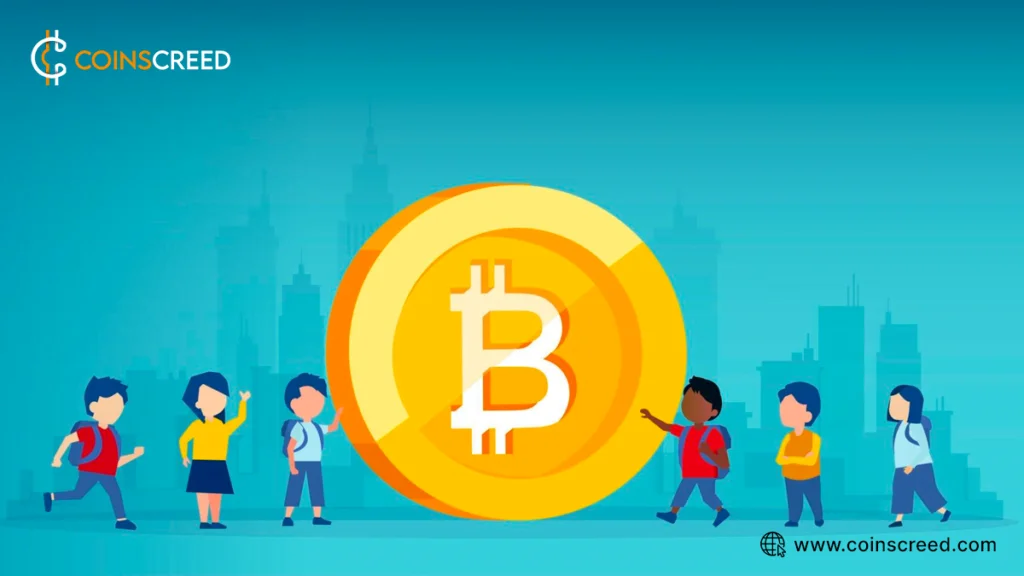In today’s digital age, cryptocurrencies, and blockchain technology have revolutionized how we perceive money and financial transactions. In this article, we will explore the significance of crypto education for kids and teach them about blockchain technology and digital money.

What is Digital Money?
Digital money refers to a form of currency that exists in electronic or digital format rather than physical cash or coins. It is a currency that can be used for transactions, just like traditional money, but it exists only in digital or virtual form.
Digital money is stored and exchanged electronically using various digital platforms, payment systems, or cryptocurrencies. It allows quick and convenient transactions through computers, smartphones, or other digital devices.
Digital money offers several advantages: convenience, speed, and accessibility. It allows easy online shopping, transfers between individuals or businesses, and cross-border transactions. Here are different forms of digital money:
- Digital currencies
- Cryptocurrencies
- E-wallets and Mobile Payment Apps
Digital Currencies
These are centralized digital representations of traditional money governments or financial institutions issued. Examples include digital versions of national currencies like digital dollars or digital euros.
Cryptocurrencies
These decentralized digital currencies use cryptography for secure transactions and to control the creation of new units. Bitcoin, Ethereum, and Litecoin are examples of cryptocurrencies.
E-wallets and Mobile Payment Apps
These digital platforms or applications allow users to store and manage their digital money on their smartphones or other devices. Examples include PayPal, Venmo, and Apple Pay.
Cryptocurrencies
What Are Cryptocurrencies?
Cryptocurrencies are digital currencies that operate on a decentralized network called blockchain. They are secure and transparent, offering faster and cheaper transactions, financial inclusivity, and potential investment opportunities. In crypto education for kids, we can explain that cryptocurrencies are like digital tokens that can be used to buy goods and services online, similar to how they use digital game currencies in their favorite video games.
Types Of Cryptocurrency
Generally, there are two broad categories of cryptocurrencies
- Bitcoin
- Altcoin
Bitcoin (BTC):
Bitcoin, often called the pioneer of cryptocurrencies, holds a special place in the digital currency landscape. Created by an anonymous individual or group known as Satoshi Nakamoto, Bitcoin introduced the concept of decentralized, peer-to-peer electronic cash. It remains the most recognized and widely used cryptocurrency, serving as a benchmark for the entire industry.
Altcoin
Altcoins, short for “alternative coins,” are cryptocurrencies that emerged as alternatives to Bitcoin. These digital currencies have distinct features and often aim to address the perceived limitations of Bitcoin. Examples of altcoins include Ethereum (ETH), Litecoin (LTC), Ripple (XRP), and many others. Each altcoin offers a unique value proposition, such as faster transaction speeds, enhanced privacy features, or specialized use cases like decentralized applications (DApps) and smart contracts.
Altcoins come in various flavors and categories. An altcoin can fall into multiple categories, such as TerraUSD, a stablecoin, and a utility token. Here’s a summary of the types of altcoins:
- Stablecoins
- Security tokens
- Utility tokens
- Meme coins
- Governance tokens
Stablecoins
Like regular currency, stablecoins are unique digital coins that try to keep their value steady. They are made to be reliable and stay the same price. It’s like having a particular coin with the same value, so you can use it to buy things without worrying about getting too expensive or cheap. Examples of stablecoins are Tether (USDT), USD Coin (USDC), and Dai (DAI).
Security tokens
Security tokens are unique tokens representing ownership or investment in real things, like company shares or properties. They are like digital certificates that show you own a part of something valuable. People use security tokens to buy and sell these shares or assets online. It’s like having a special token that proves you own a piece of a company or property. Examples of security tokens are Polymath and tZero.
Utility tokens
Utility tokens are digital coins that give you special access to something useful, like a service or a platform. It’s like having a token to get special benefits or use certain things online. For example, you might use utility tokens to play games, access specific websites, or pay for services. Binance Coin (BNB) and Basic Attention Token (BAT) are examples of utility tokens.
Meme coins
Meme coins are funny and playful digital coins that became popular because of internet jokes and trends. They are like coins that people use for fun and entertainment. Meme coins might not have a specific purpose or use, but people enjoy using them because they are associated with popular memes and jokes. An example of a meme coin is Dogecoin (DOGE).
Governance tokens
Governance tokens are unique tokens that give you the power to make decisions about something. It’s like having a token that lets you vote and have a say in how things are done in a particular online community or organization. People who hold governance tokens can help decide on changes, upgrades, or rules for a blockchain project or platform. Examples of governance tokens are Maker (MKR) and Compound (COMP).

Blockchain
What Is Blockchain Technology?
Blockchain is the underlying technology behind cryptocurrencies. To help kids grasp the concept of blockchain, we can explain it as a digital ledger or a chain of blocks. Each block contains a list of transactions, and once a block is added, it is linked to the previous blocks, forming an unchangeable and transparent record of all transactions.
It can also be explained as a digital ledger that records all crypto transactions decentralized and transparently. We can use the analogy of a digital notebook, where every transaction is recorded on a new page, and everyone in the network has a copy of this notebook to ensure transparency and prevent fraud.
How Does Blockchain Work?
The blockchain works like a team of superheroes. When a new transaction happens, it is added to a block. But this block doesn’t just appear out of thin air. Miners, who are like superheroes, solve puzzles to create and validate the new block. Once the block is validated, it becomes part of the blockchain forever.
Key Features of Blockchain
- Safety
- Transparency
- Teamwork
- Superspeed
Safety
Blockchain keeps transactions secure using special codes. Once a transaction is recorded on the blockchain, it’s almost impossible to change or trick the system. This makes cryptocurrencies very safe to use.
Transparency
The blockchain is like a see-through window. Anyone can look at it and see all the transactions that have ever happened. This transparency helps everyone trust the system because they can check if everything is fair and honest.
Teamwork
Blockchain is a team effort. It doesn’t have a boss or a single owner. Everyone who uses the blockchain is part of the team. They work together to ensure the transactions are correct and nobody cheats.
Super Speed
When using traditional banks, sending money to someone in another country can take a long time. But with blockchain, it happens very quickly. This makes it easier to send and receive money, even across borders.
Conclusion
Crypto education for kids is vital in preparing them for the digital future. By teaching children about blockchain technology and digital money in a simplified and engaging manner, we empower them to navigate this evolving landscape with confidence and understanding.
